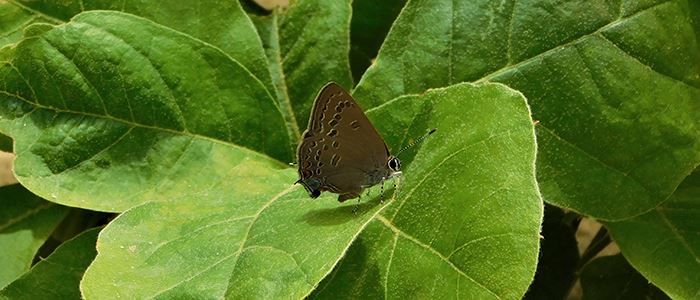Monitoring Butterflies in our Region

Monitoring Butterflies in our Region
By: Ashley Fink, Liz Stahl, and Karen Menard
Fluttering through our parks are gorgeous butterflies that range in colors and patterns. Since 1999, the Metroparks has played a role in the larger, Ohio, state-wide long term butterfly monitoring survey. This program is sponsored by the Ohio Division of Wildlife, the Ohio Biological Survey, the Cleveland Museum of Natural History and the Ohio Lepidopterists. Data provides information regarding fluctuations in numbers of animals over time and documents the colonization of different species as habitats undergo changes or corridor connections are established.
There are a total of five loops or walking “transects” in three parks that allow volunteers access to monitor butterflies. These transects are chosen to reflect the diverse types of habitats and butterflies that exist in northwest Ohio. Specific guidelines ensure that volunteers consistently and accurately collect the species data each season.
Each park loop or transect must be walked weekly during the monitoring season from April 1 until October 31. The volunteers then, must record data on the weather, habitat, and nectar/host plant sources. A key requirement is proper species identification in the field, as many of the smaller butterflies in the skipper and hairstreak groups can be challenging.
Monitoring is no small task, and it plays an essential role in the understanding and management of Metropark ecosystems. The long-term data feeds into a larger knowledge base that involves decision making in regard to best management practices such as burning, appropriate placement of nectar and host sources, as well as invasive species removal. The data collected through the butterfly surveys is not only valuable locally and for Ohio, but it has also been shared with other scientific researchers and utilized in regard to studies on climate change and species decline.
Currently, there are nine Metropark volunteers that monitor butterflies as part of this important, annual effort. One of the volunteers, Renee Oberle, has been active for the last twelve years. Renee says that the best part of being a volunteer is, “Always seeing a wide variety of species each time you monitor.” And, one of the most uncommon butterflies she has come across was the Edward’s Hairstreak butterfly (pictured), found in the Oak Openings. This species has a unique relationship with the Allegheny Mound Ant, often found living in sand mounds nearby. This ant protects the caterpillar by safely “escorting” them up into the branches of young oak trees to feed and then is rewarded with a drink of the sugary honeydew secreted by the butterfly larvae.
Volunteering for these types of projects not only increases species identification skills, but also allows for unique opportunities while out in the field to learn about and experience viewing other life forms and ecosystem relationships firsthand- such as seeing the Edward’s Hairstreak butterflies flying among the oak saplings and ant mounds in the heart of the Oak Openings.
Video provided by Division of Wildlife